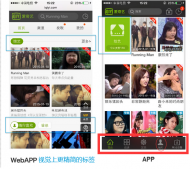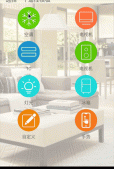最近在公司用到外设,需要判断接入的外设的VendorId和ProductId,然后给大家说一下自己的学习成果把 ,首先我门可以通过android.hardware.usb.action.USB_STATE监听自己的Usb连接的设备,只针对Usb设备。而想要监听外部设备的时候却需要另外的两个广播进行监听"android.hardware.usb.action.USB_DEVICE_ATTACHED"和"android.hardware.usb.action.USB_DEVICE_DETACHED"。要是想对耳机或者耳机的状态进行监听的时候需要的广播是"android.intent.action.HEADSET_PLUG" 通过
int inttype=intent.getIntExtra("microphone",0)来获取耳机是否有麦克风。inttype==0表示没有耳机inttype==1表示有耳机
我个人的建议就是将一部分代码(根据个人情况而定)放到服务里面,或者是Application里面。
|
1
2
3
4
5
6
7
8
9
10
11
12
13
14
15
16
17
18
19
20
21
22
23
24
25
26
27
28
29
30
31
32
33
34
35
36
37
38
39
40
41
42
43
44
45
46
47
48
49
50
51
52
53
54
55
56
57
58
59
60
61
62
63
64
65
66
67
68
69
70
71
72
73
74
75
76
77
78
79
80
81
82
83
84
85
86
87
88
89
90
91
92
93
94
95
96
97
98
99
|
import com.example.usbusb.utils.ToastUtils;import android.app.Activity;import android.content.BroadcastReceiver;import android.content.Context;import android.content.Intent;import android.content.IntentFilter;import android.os.Bundle;import android.widget.Toast;public class MainActivity extends Activity { //耳机的广播 public static final String TAGLISTEN = "android.intent.action.HEADSET_PLUG"; //usb线的广播 private final static String TAGUSB = "android.hardware.usb.action.USB_STATE"; //外设的广播 public static final String TAGIN = "android.hardware.usb.action.USB_DEVICE_ATTACHED"; public static final String TAGOUT = "android.hardware.usb.action.USB_DEVICE_DETACHED"; private boolean BOOLEAN=false; @Override protected void onCreate(Bundle savedInstanceState) { super.onCreate(savedInstanceState); setContentView(R.layout.activity_main); //赛选器 IntentFilter filter = new IntentFilter(); //筛选的条件 filter.addAction(TAGIN); filter.addAction(TAGOUT); filter.addAction(TAGUSB); //注册广播 动态注册 registerReceiver(receiver, filter); } /** * 创建广播的类 */ BroadcastReceiver receiver = new BroadcastReceiver() { @Override public void onReceive(Context context, Intent intent) { String action = intent.getAction(); //判断外设 if (action.equals(TAGIN)) { ToastUtils.shwotoast(context, "外设已经连接"); //Toast.makeText(context, "外设已经连接", Toast.LENGTH_SHORT).show(); } if (action.equals(TAGOUT)) { if (BOOLEAN) { ToastUtils.shwotoast(context, "外设已经移除"); //Toast.makeText(context, "外设已经移除", Toast.LENGTH_SHORT).show(); } } //判断存储usb if (action.equals(TAGUSB)) { boolean connected = intent.getExtras().getBoolean("connected"); if (connected) { ToastUtils.shwotoast(context, "USB 已经连接"); //Toast.makeText(MainActivity.this, "USB 已经连接",Toast.LENGTH_SHORT).show(); } else { if (BOOLEAN) { ToastUtils.shwotoast(context, "USB 断开"); //Toast.makeText(MainActivity.this, "USB 断开",Toast.LENGTH_SHORT).show(); } } } //判断耳机 if (action.equals(TAGLISTEN)) { int intExtra = intent.getIntExtra("state", 0); // state --- 0代表拔出,1代表插入 // name--- 字符串,代表headset的类型。 // microphone -- 1代表这个headset有麦克风,0则没有 // int i=intent.getIntExtra("",0); if (intExtra == 0) { if (BOOLEAN) { ToastUtils.shwotoast(context,"拔出耳机"); //Toast.makeText(context, "拔出耳机", Toast.LENGTH_SHORT).show(); } } if (intExtra == 1) { ToastUtils.shwotoast(context, "耳机插入"); //Toast.makeText(context, "耳机插入", Toast.LENGTH_SHORT).show(); int intType = intent.getIntExtra("microphone", 0); if (intType == 0) { ToastUtils.shwotoast(context, "没有麦克风"); //Toast.makeText(context, "没有麦克风" + intType,Toast.LENGTH_SHORT).show(); } if (intType == 1) { ToastUtils.shwotoast(context,"有话筒" ); //Toast.makeText(context, "有话筒" + intType,Toast.LENGTH_SHORT).show(); } } } BOOLEAN=true; } }; /** * 注销广播 */ protected void onDestroy() { unregisterReceiver(receiver); };} |
ToastUtils工具类
|
1
2
3
4
5
6
7
8
9
10
11
12
13
14
15
16
17
|
import android.content.Context;import android.widget.Toast;public class ToastUtils { public static Toast toast=null; private ToastUtils toastUtils=new ToastUtils(); private ToastUtils(){} public static void shwotoast(Context context,String msg){ if (toast==null) { toast=Toast.makeText(context, msg, Toast.LENGTH_SHORT); }else { if (toast!=null) { toast.setText(msg); } } toast.show(); }} |
下面的一个就是获取每一个Id的端口号通过在Usb的广播里面调用这个方法判断是否是自己的设备,这样就可完成自己想要的操作了(注意当看到设备的ID是以0x开头的是十六位的 然后转化成十进制的数就能看到自己的东西了)
|
1
2
3
4
5
6
7
8
9
10
11
12
13
14
15
16
17
18
19
20
21
|
import java.util.HashMap;import android.annotation.SuppressLint;import android.content.Context;import android.hardware.usb.UsbDevice;import android.hardware.usb.UsbManager;import android.os.Bundle;import android.support.v7.app.ActionBarActivity;import android.util.Log; public class MainActivity extends ActionBarActivity { protected void onCreate(Bundle savedInstanceState) { super.onCreate(savedInstanceState); setContentView(R.layout.activity_main); UsbManager usbManager = (UsbManager) getSystemService(Context.USB_SERVICE); HashMap<String, UsbDevice> map = usbManager.getDeviceList(); System.out.println("......................befor...................................."); for(UsbDevice device : map.values()){ System.out.println(".......one..........dName: " + device.getDeviceName()); System.out.println(".......tow.........vid: " + device.getVendorId() + "\t pid: " + device.getProductId()); } System.out.println("........................after.................................."); } |
结果我们都能看到有两个设备

总结
以上就是这篇文章的全部内容了,希望本文的内容对大家的学习或者工作具有一定的参考学习价值,谢谢大家对服务器之家的支持。如果你想了解更多相关内容请查看下面相关链接
原文链接:https://blog.csdn.net/ChaoLi_Chen/article/details/51313616













